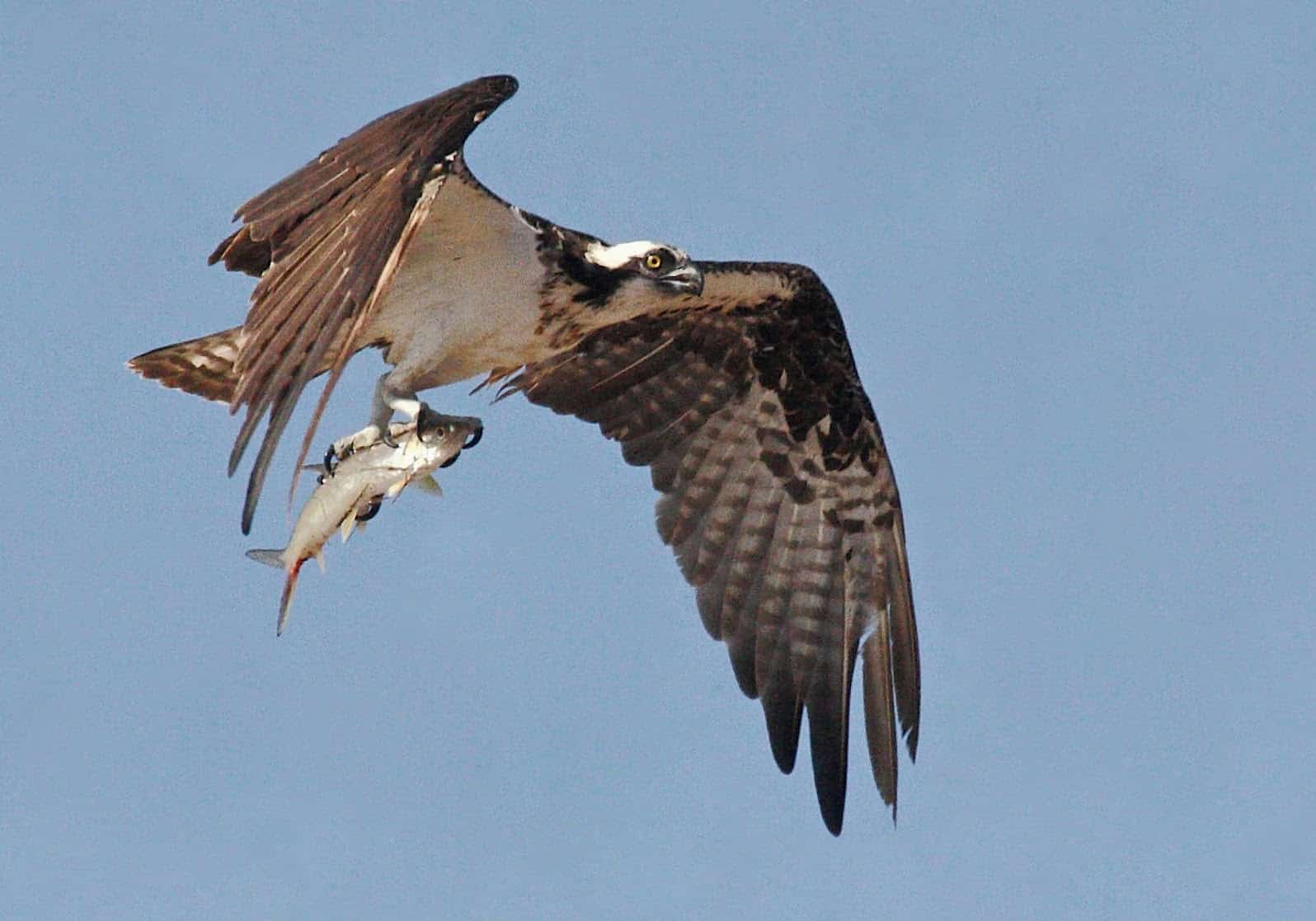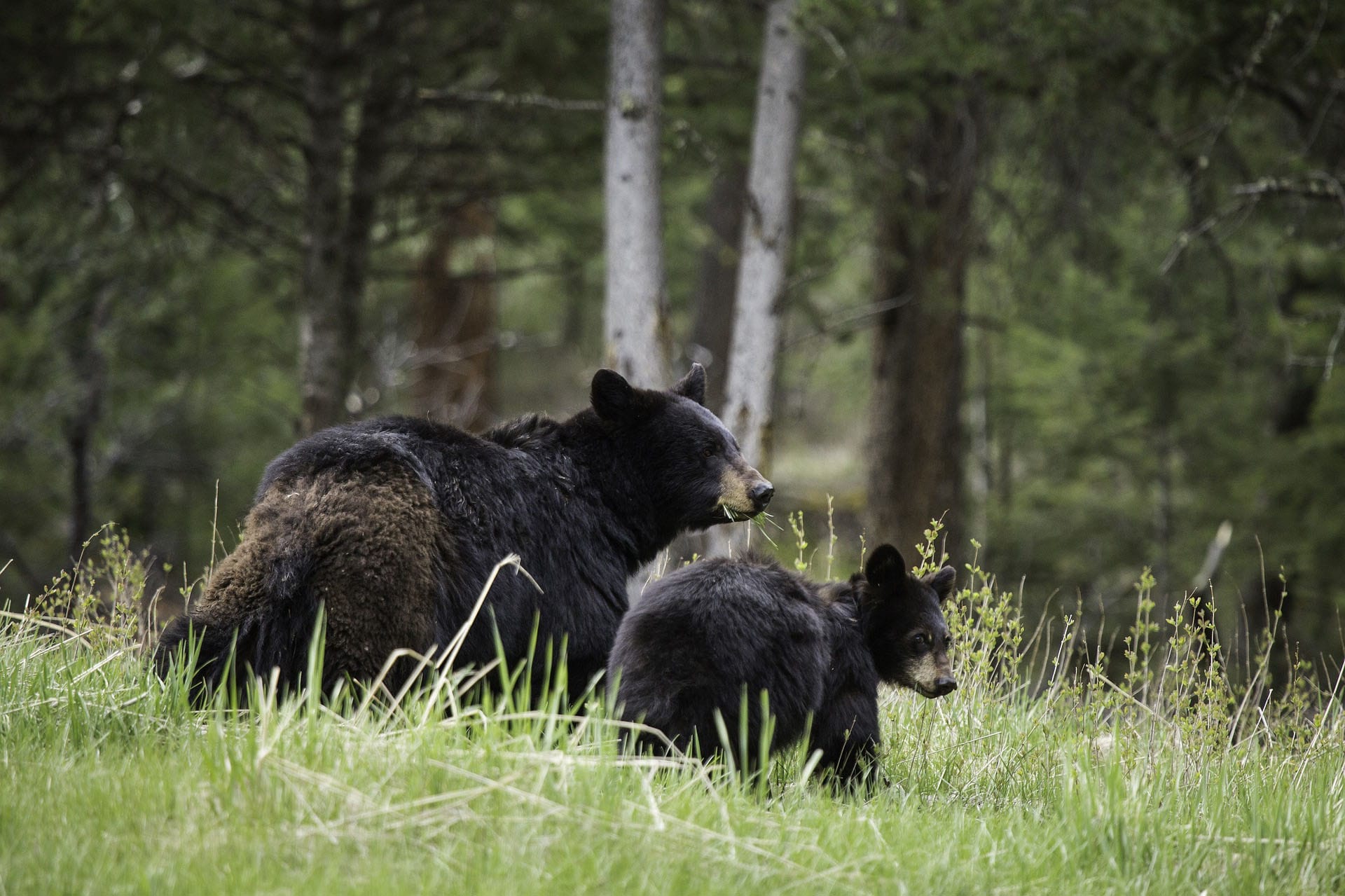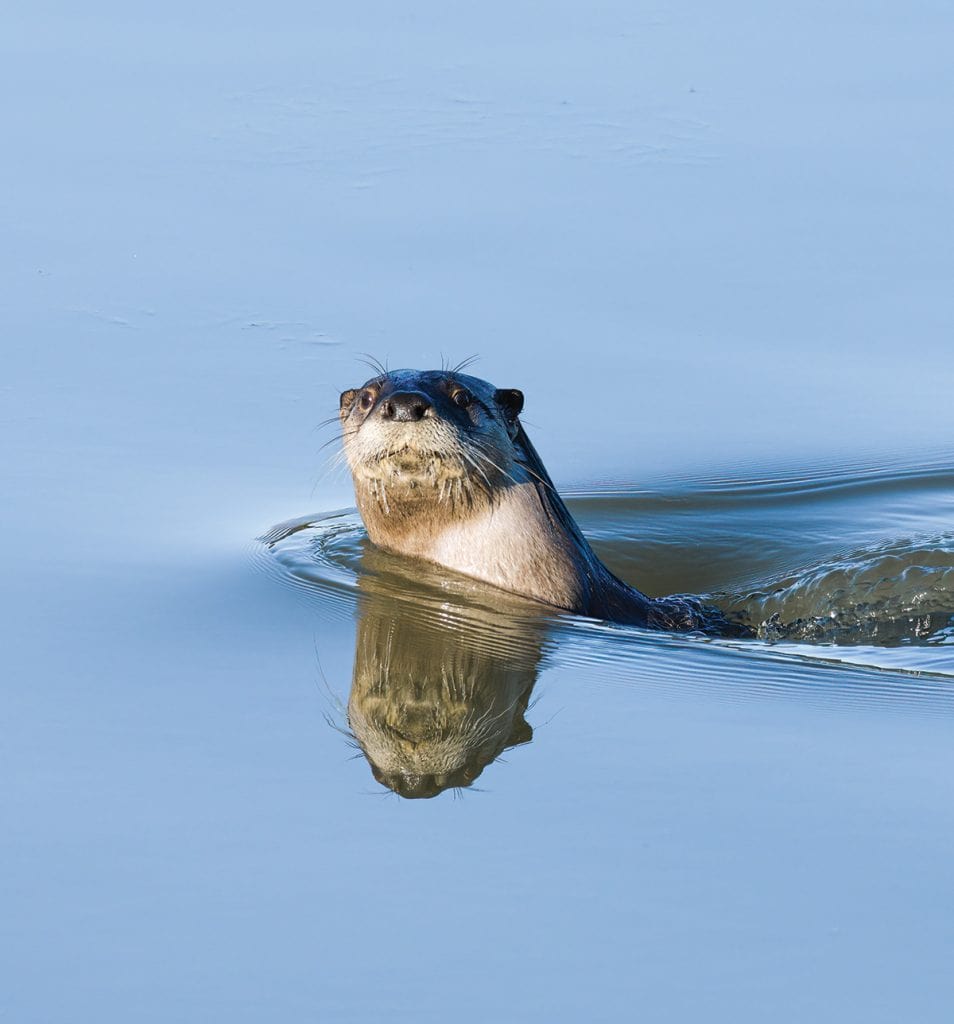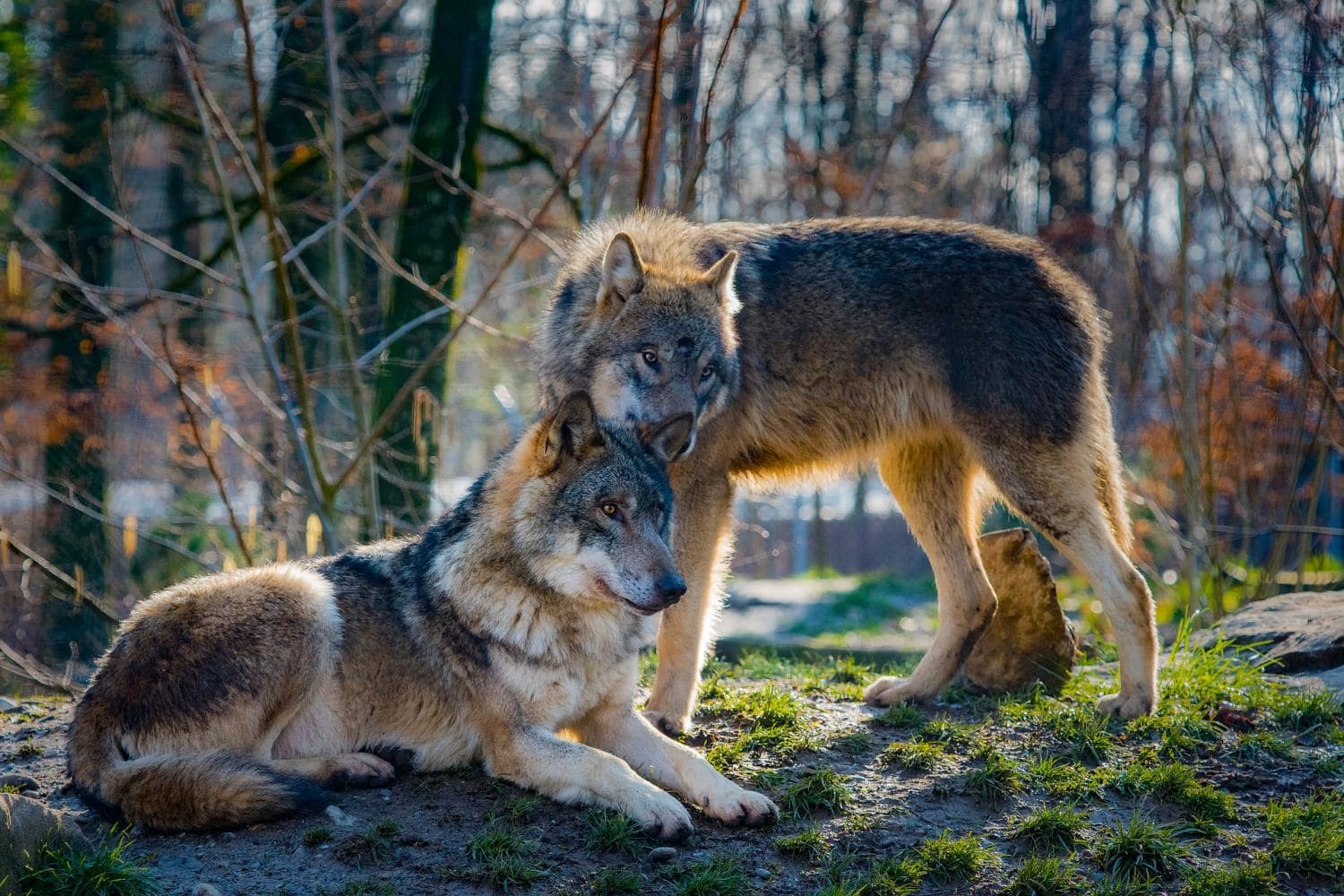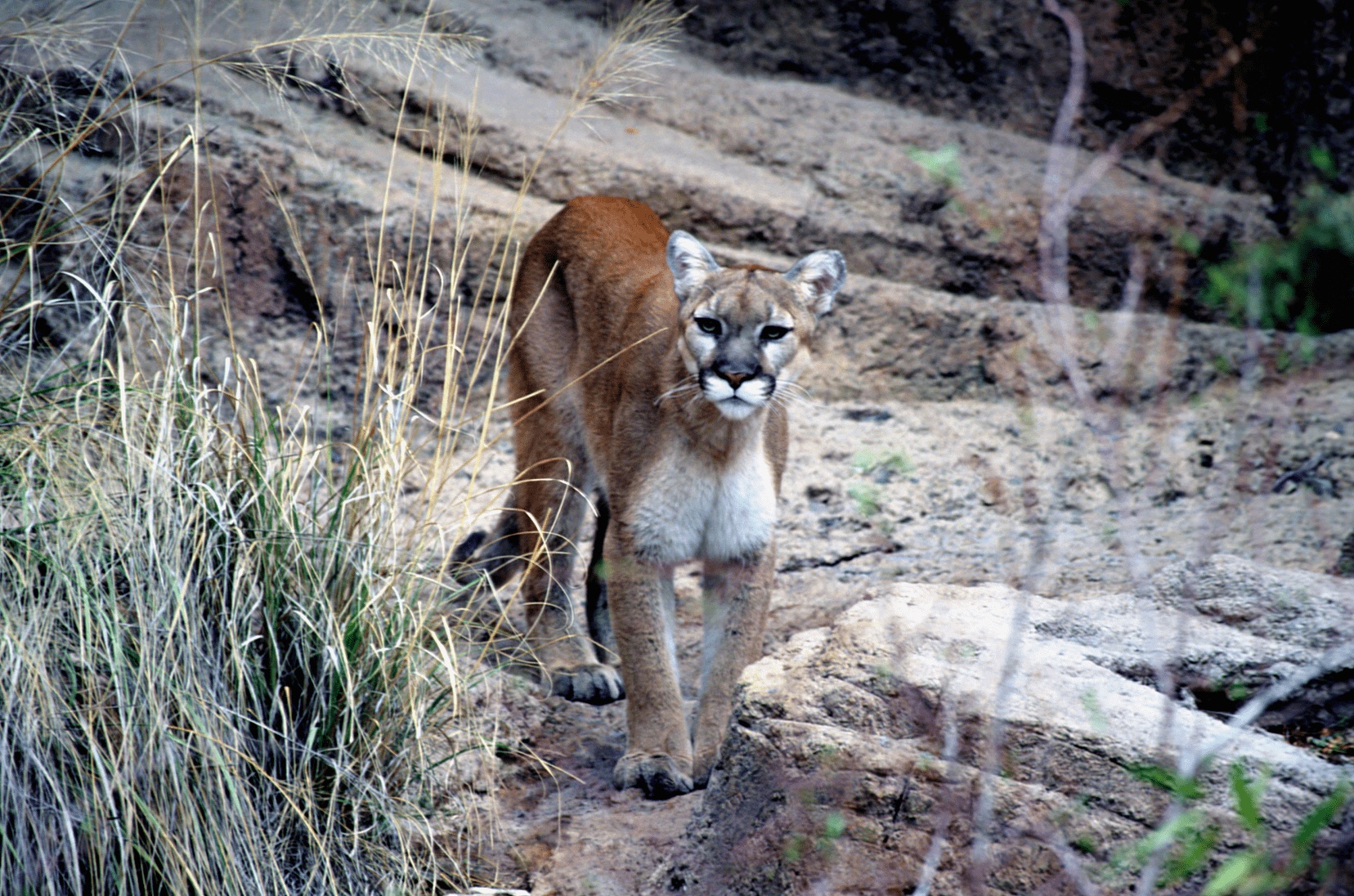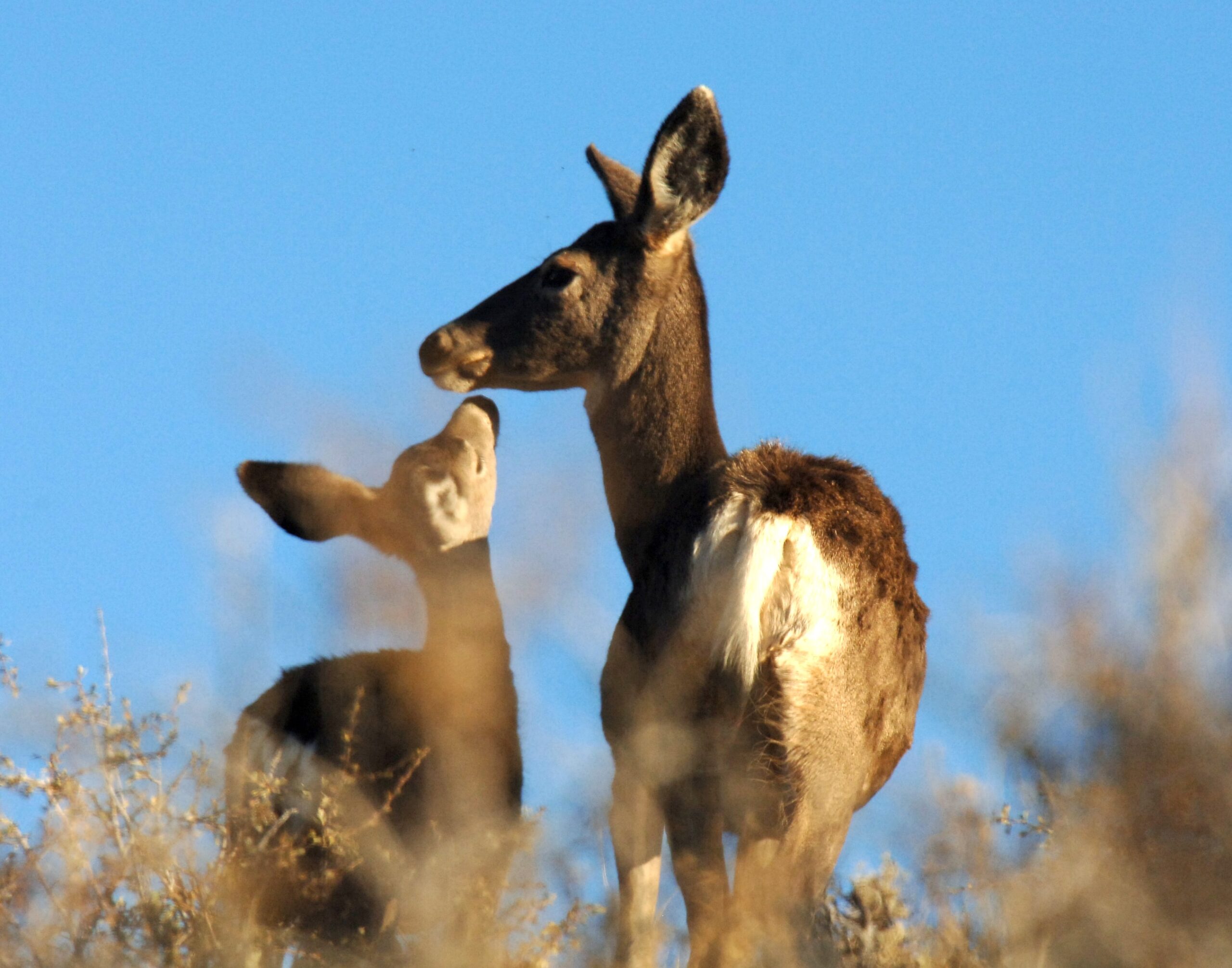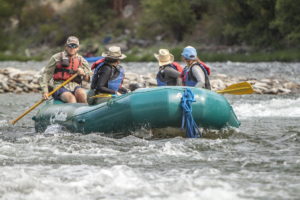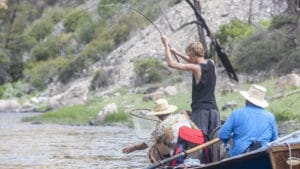Wildlife Encounters While Rafting the Middle Fork Salmon. The wildlife on the Middle Fork of the Salmon River is abundant, mainly due to the fact that the river flows through the 2.8 million acres of contiguous nature in the Frank Church River of No Return Wilderness Area. Animals and birds alike are free to roam and live their wildest lives in a region that is protected and preserved.
Wildlife encounters while rafting are common on the Middle Fork, but never fail to excite and inspire river users. Experiencing the magic of a frolicking family of otters, witnessing the hunt of a cunning osprey, or seeing the trundling form of a black bear on the river banks can be the highlight of a river trip.
Here is a list of what critters you might see while rafting the Middle Fork of the Salmon River!
Black Bears
Not nearly as intimidating as their larger and fiercer cousin, the Grizzly, the Black Bears of Idaho are shy and secretive, yet curious in their demeanor. They spend their summers roving the mountains and side creeks along the Salmon River canyons, eating as much as they can. It is a common misconception that black bears eat mostly meat and fish — their actual diet consists of 95% plants!
Black bears are also not always black — in fact the bears we see along the Middle Fork tend to range from brown to reddish to even blond in color. They are forest bears, adapted to climb trees, squeeze through brush, and blend into shaded groves.
These creatures are reclusive and timid, so a wildlife encounter with a bear is truly a special occasion. We don’t worry about bears in or around our camps, as they tend to stay far away from us humans.
River Otters
There is no cuter wildlife on the Middle Fork Salmon than the rambunctious river otter. They can be seen rollicking down the river on their own or in romps of up to 5 otters! Otters love to eat fish, but aren’t too picky, also enjoying plants, small mammals, and birds. Deceptively innocent-looking, the river otter is actually a ferocious hunter, with sharp canine teeth and strong molars.
Otters are professional swimmers and river runners. Their long sleek bodies are perfect for slicing through the currents, webbed feet and rudder-shaped tails expertly steer, and their double layers of fur keep them warm in the most frigid of temperatures.
It is quite common to see otters as you raft the Middle Fork, but you had better look quickly! Otters can dive over 30 feet deep and stay underwater for up to 8 minutes. They are incredibly curious, but also quick to move on down the river.
Ermine
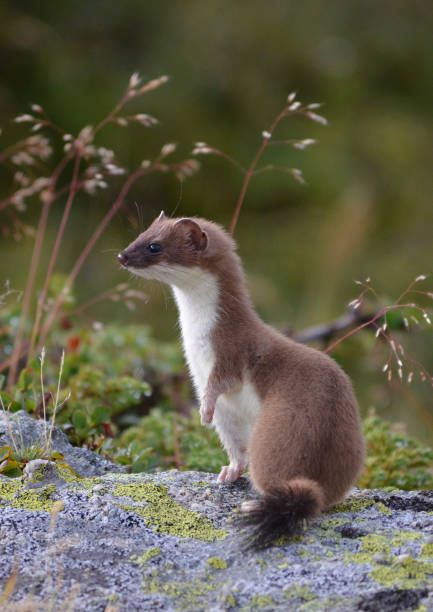
Ermine are members of the overarching weasel family, like the otter. Much smaller in size than the otter, ermine are primarily terrestrial, but they climb trees and swim very well. If you see a long and slender creature running along and among the rocks on shore, it is likely an ermine.
Also adorable like their otter cousins, seeing an ermine is another exceptional wildlife encounter while rafting the Middle Fork Salmon. But, like all critters on the river, it is best not to get too close. All mustelids (the family that encompasses weasels, ermine, mink, and otter) have a natural musk or odor they exude that can be very potent! This smell is used to attract mates, mark their food stashes, and warn other animals.
One more fun fact about the ermine is that their entire fur coat changes color depending on the season. In deep winter, this critter is pure white, incredibly camouflaged with their snowy environment. When we see ermine in the summer, they are a dark brown color, with rougher and shorter fur.
Wolves
After they were nearly wiped out in the lower 48 states, wolves in Idaho were declared endangered in 1974 under the Endangered Species Act. On January 20, 1995, eleven wolves were released at Indian Creek and at Thomas Creek along the Middle Fork of the Salmon River. A year later, twenty more wolves were released at Dagger Falls just upstream of our put-in on the Middle Fork.
Since then, the wolf population in the Frank Church Wilderness has grown steadily through reproduction and dispersal.They tend to be 4.5-6.5 feet long and 2.5 feet tall at the shoulder, depending on if they are male or female. Gray wolves may range in color from black to nearly white, with a whole spectrum of colors in between. The wolves I have encountered on the Middle Fork were a rich tan color with gray and black highlights.
Wolf packs occupy exclusive territories that they defend against intruding wolves. In Idaho, the average pack territory is 360 square miles! Within this terrain, packs hunt together for large prey, such as deer, elk and moose. In the summer months, wolves also hunt small animals such as beavers, marmots, ground squirrels, snowshoe hares, pocket gophers, and voles.
Wolves are a natural and historic member of the Frank Church Wilderness and the Middle Fork Salmon River ecosystems. Their presence is an important ecological balance, maintaining a steady population of other animals. Despite wolves’ precedented existence in the region, their way of life is threatened and controversial.
There are few creatures as mythical and mysterious as the modern wolf, and that fact remains true along the Middle Fork Salmon River. It is very seldom that people get to encounter wolves while rafting the river.
Mountain Lions
Equally or even more elusive than the wolf is the mighty mountain lion, or cougar, that lives all across Idaho. These massive cats range in size from five feet long to nine feet long, and can weight up to 270 pounds!
In Idaho, mountain lions’ favorite food is mule deer, but they will eat just about anything they can catch. Mountain lions are known to stalk their prey, and get above the animal by climbing a tree or getting up on some rocks. They jump onto the animals’ back and break the neck with a quick bite. When mountain lions kill a large animal, they create a food cache by burying the leftovers under leaves and twigs. This can feed them for days.
These big cats are solitary creatures, living most of their lives on their own, other than a mother mountain lion raising her young. As far as wildlife encounters while rafting on the Middle Fork Salmon goes, we are least likely to come across a mountain lion, they are just that evasive. If anything, it is likely the mountain lion will see you, and you will never know it is there.
Mule Deer
The most common large mammal in Idaho, the mule deer is known not only for its prolific population but also for its very large ears! On average, buck mule deer weigh about 250 pounds and have large branching antlers, whose size depends on the quantity and quality of food they eat.
The most important habitat for mule deer is the summer habitat. Along the Middle Fork Salmon during the spring and summer seasons, mule deer may be found on mountain slopes where shrubs, flowering plants and grasses grow. If deer eat well during the summer and are well-nourished when winter comes, they usually can survive severe the severe and desolate Idaho wilderness winters.
Rafting wildlife encounters with mule deer are very common along the Middle Fork! It is especially exciting when we get to see does with their spotted fawns in the spring time.
Big Horn Sheep
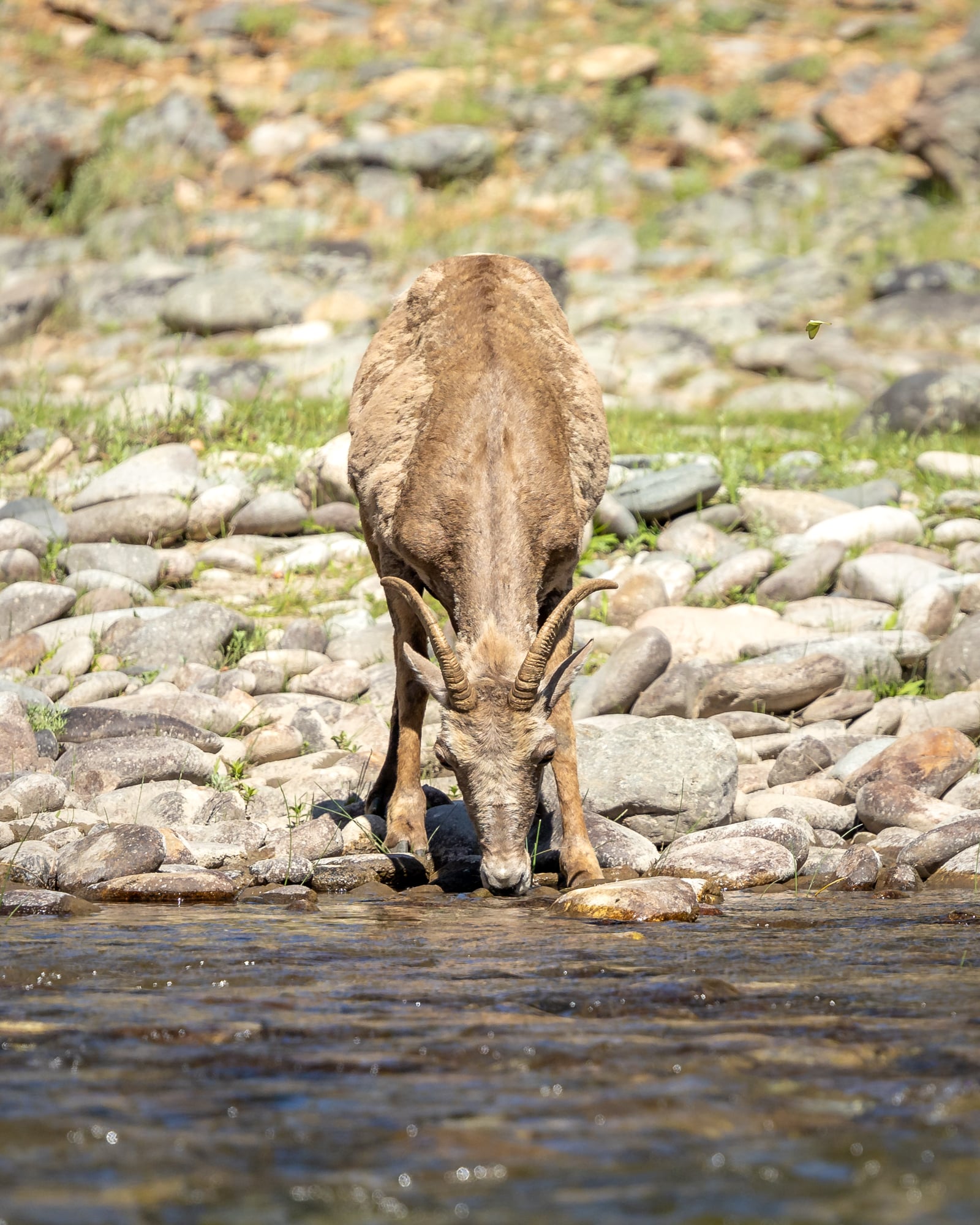
As far as wildlife encounters while rafting the Middle Fork go, Bighorn sheep are fan favorites! These fascinating creatures are often spotted along the shores of the river as we descend into the sub-alpine biome of the river, with sagebrush and Ponderosa pines populating the majority of the landscape. We usually see ewes with their kids (mother sheep and their young), traveling in large groups and feeding along the way.
The Tukadeka, or Sheepeater, indigenous people relied heavily on the meat, hide, and horns of bighorn sheep for generations. They were known to hunt these sheep by building blinds in rock scree fields and luring the sheep into traps. The meat kept them well fed, the hides were used as clothes or coverings, and the horns were melded into some of the most powerful bows in the west.
Bighorn sheep faced more difficult dilemmas as settlers moved in to the Idaho area in the late 1800s and early 1900s, including loss of habitat, hunting, and unstoppable outbreaks of disease. The sheep in the Middle Fork basin were largely protected because of their isolation, but still saw their numbers dwindle.
Rocky Mountain bighorn sheep are the largest wild sheep in North America. They have wide-set eyes that provide a sizable angle of vision. Paired with their keen hearing and advanced sense of smell, these animals detect danger at great distances. Specialized hooves provide a natural grip as bighorn sheep make precarious jumps and breath-taking climbs up and down sharp cliff faces.
While we often have encounters with the ewes and their young, it is much more rare to see a fully grown ram. Rams can weigh up to 350 pounds, their horns accounting for up to 30 pounds of that weight!
Bald Eagle
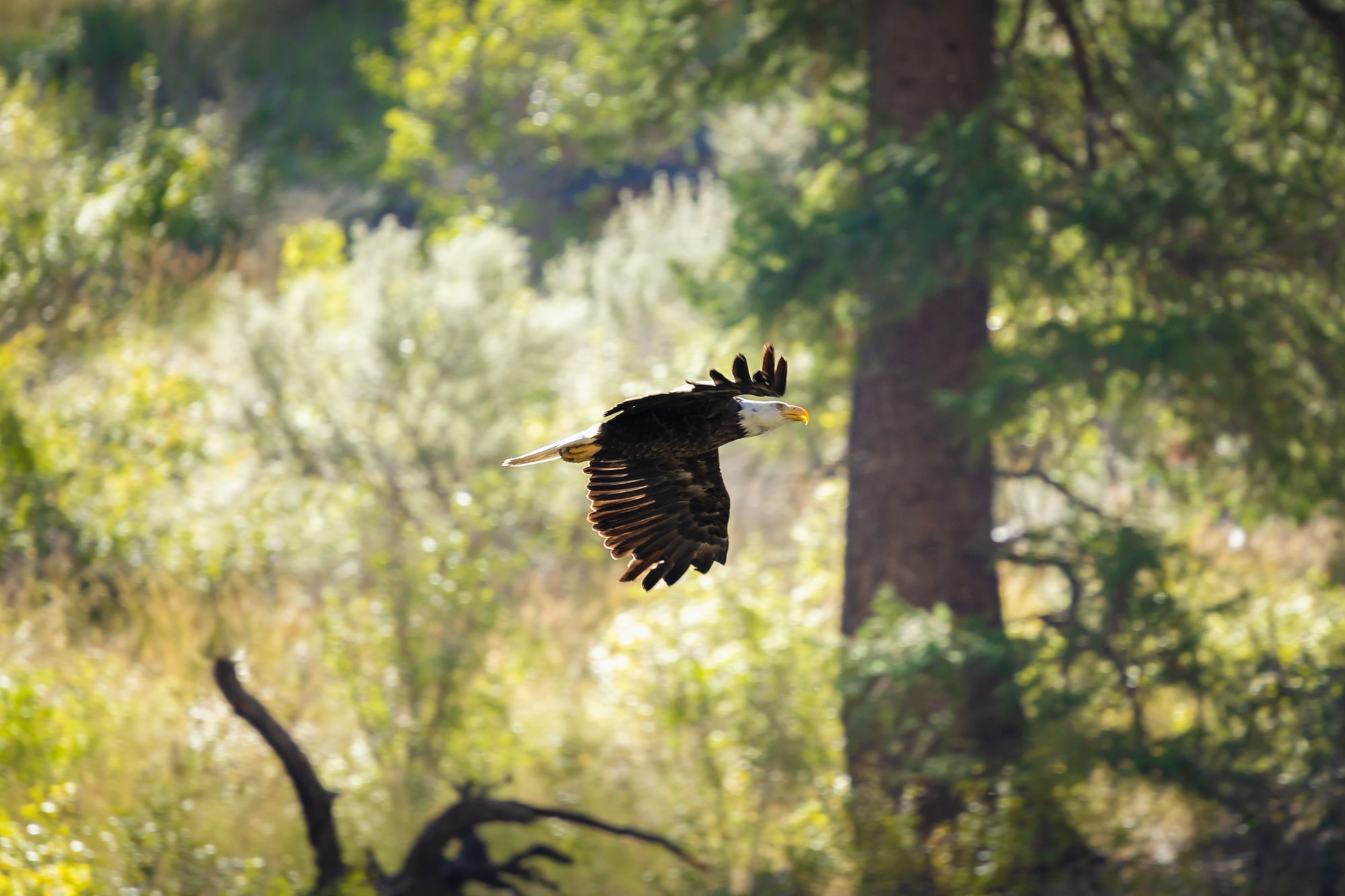
The most symbolic bird in our country thrives along the Middle Fork Salmon River. Rafting wildlife encounters with the bald eagle are frequent and awe-inspiring. There is something about the bird that evokes wonder and pride.
Bald eagles were once much more prolific along the banks of rivers in Idaho, but hunting, disease, and pollution severely affected this species, leading them to near-extinction in the 1960s and 70s. It took a massive effort and the banning of several poisonous pesticides to bring bald eagles back from the brink of disappearance.

These birds are big, standing around 3 feet tall and weighing up to 14 pounds. Female bald eagles are almost 30% larger than males! Young eagles don’t develop their tell-tale white bald head until they are about 3-5 years of age, and are often mistaken for golden eagles. Eagles can live up to 30 years in the wild, and 50 years in captivity! They build huge nests, layering sticks and debris with the remains of their kills. The nests are passed down generation to generation, and have been known to expand up to 10 feet deep and 7 feet wide.
While bald eagles maintain a noble reputation as the symbol of our nation, they are know as well-reputed among the animal kingdom. Eagles are able to hunt for their own food, going after fish and small rodents, but are also known as scavengers of the skies, harassing other birds and animals for their kills, stealing food from others, and pillaging roadkill.
We see bald eagles soaring above the river, perched in trees on the shores, and skirmishing with other birds as they fight to ensure their place along the Middle Fork Salmon River.
Osprey
One of the most accomplished raptors of the Middle Fork Salmon River, osprey are cunning hunters and incredible fliers. They are also migratory, leaving Idaho in the fall and traveling south to Central and South America. Osprey begin to arrive back in Idaho at the beginning of April. By the end of May, you can find osprey along forested streams, rivers and lakes in just about all parts of the state.
Unlike the bald eagle, ospreys’ diet consists entirely of fish, and they have several neat adaptations to help them hunt. Their feet have barbed-covered pads and reversible outer toes to grip fish with two toes holding on in-front and two toes holding the fish in back. Ospreys hunt from perches near the water or while soaring above. They may disappear completely beneath the surface for a moment after plummeting, talons-first, after prey. Their slit-like nostrils close on impact.
Rafting wildlife encounters with the osprey are common, as we witness them dive-bombing the river and emerging with flopping fish, or observe them as they scan the river from on high in their unique and exposed nests that offer unrestricted views of their domain.
